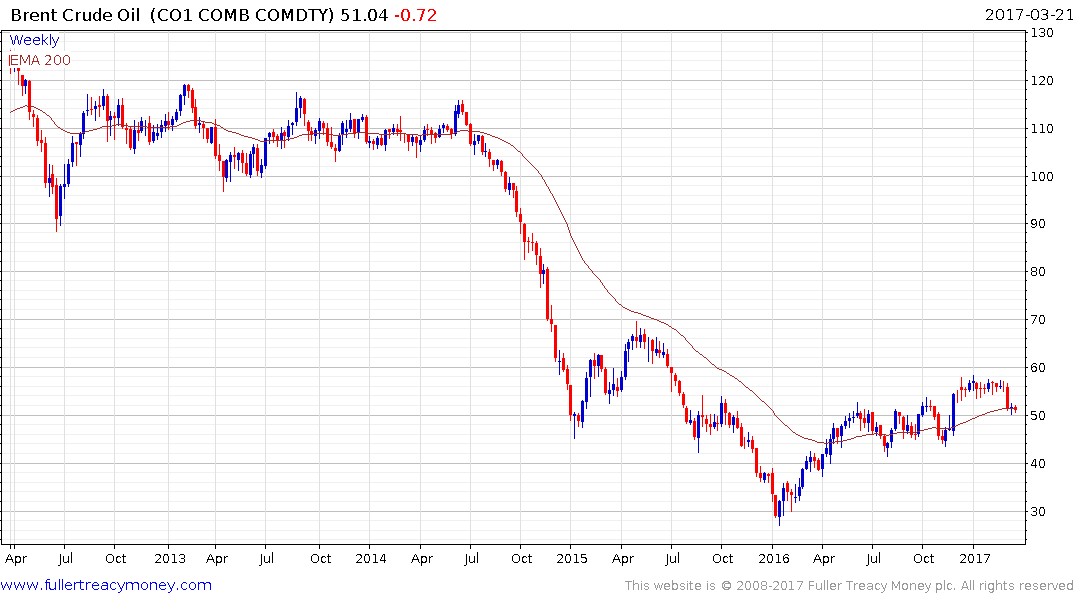Musings from the Oil Patch March 21st 2017
Thanks to a subscriber for this edition of Allen Brooks’ ever interesting report for PPHB. Here is a section comparing the efficiency of a Tesla to a BMW 7 Series:
“Liberals frequently care more about feelings than facts, and your smug Tesla-owning frenemy will never admit it, but in day to day usage, the big BMW is actually 18% more efficient, and 18% kinder to the planet. (Don’t get too cocky, Mr. 7 Series: at a US average 12 cents per KwH, the electricity cost to the Tesla owner for 1000 miles works out in total to about $81, as opposed to $98 for the gasoline. The reason the Tesla is less efficient, but still cheaper to run, is that the power company pays a lot less for fuel than the automobile driver does. But when the issue is green impact, not greenbacks, the BMW wins handily.)
And
“Of course, no self-respecting Green Weenie would settle for powering his car by the sun, but his house by Con Edison. And with the average efficient house using 1 KwH per hour, i.e., 24 KwH per day, the house needs 4.8 KwH capacity, and considering efficiency losses and reserve requirements, that means 6.9 KwH for the house. So to power both the Tesla and the house, Green Man needs at least 1,443 square feet of power production, at a cost of $115,000. But even using a Tesla-only setup, $60k would buy 25,641 gallons of gasoline (at the current US average price of $2.34 per gallon). The Big BMW could travel, on that much fuel, 24,000 x 24 MPG = 615,384 miles. Game, set and match – Munich and Detroit. Sad!”
While we didn’t do the analysis, all of Mr. Karo’s numbers were sourced, which was not a surprise, given that he is a Philadelphia lawyer, and the math works. Although Mr. Karo expresses disdain for braggadocios Tesla owners, presumably because of his experiences with some owners he has encountered, the economics in this analysis suggest that gasoline-powered vehicles will have a longer future than EV-proponents suggest, or would like to see happen. Tesla owners will not be swayed by Mr. Karo’s analysis. Instead, they will declare that with falling battery and solar panel costs coupled with their improving efficiencies, the cost advantage will soon swing in favor of EVs. However, the inability of EVs to be swapped for gasoline-powered vehicles in a one-to-one exchange for all applications means there is an extensive convincing period ahead before the public fully embraces them. Just how long that convincing period will be is anyone’s guess.
Here is a link to the full report.
There are four major themes in transportation at the present time. These are electric vehicles, automation, connectivity and sharing. Let’s for a moment take the environmental question out of the argument for electric vehicles. Many people buy them because they are cheaper to run and have fewer moving parts so they tend to be reasonably reliable.
If it comes to the cost of leasing a Chevy Cruze or Bolt the argument is heavily swayed by subsidies but the ability to charge at home rather than the time and expense of filling up at the gas station is a major point in its favour for commuters from a medium-term perspective. Considering the time it takes to deliver efficiencies in battery power density it could be five years before an affordable electric vehicle has a range of 500 miles which means range anxiety is going to be with us for a while yet.
Tesla has made headlines with its autonomous features but electric vehicles and autonomy do not necessarily need to be twinned. Connectivity and autonomy however represent a major potential theme. Cars picking up reams of data from external sensors and cameras, and relaying that to a powerful AI could make decisions on how to drive not just your vehicle but conceivably all vehicles. In other words an nth degree iteration of Google’s Waze app. That is why the current infrastructure build for 5G connectivity is so important but this scenario might even need a future 6G connectivity speed.
Ride sharing companies like Uber and Lyft also remove the need to own one’s own vehicle particularly in an urban setting. That is more of an issue for the numbers of cars sold rather than miles driven.
All of these themes are investible to varying degrees but for the moment the majority of people are focused on electric vehicles.

Oil prices have paused in the region of the trend mean more because of the continued resilience of unconventional operations against OPEC efforts to cut supply. The $50 area is offering at least temporary support but a clear upward dynamic will be required to suggest a return to demand dominance beyond steadying.


